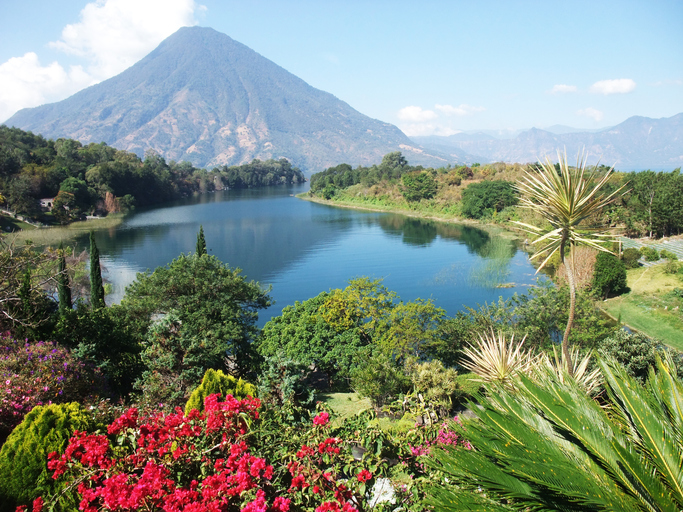There are some destinations which, for one reason or another, don’t quite get the credit they deserve. Despite the small size of the countries comprising Central America, they are all troves of genuine natural treasures in their own right. This is the perfect destination for nature lovers, where it can be experienced in all its glory.
The region’s biodiversity has made eco-tourism one of the main kinds of Central American tourism, which reaches further than the classic definition of the term.
Instead, this model adheres to a philosophy of establishing a link with the natural environment, raising awareness about environmental issues and supporting the preservation of these areas.
Each of these countries has areas that are particularly attractive for tourists, of which a selection is laid out below:
Honduras is home to Útila Island, which is the smallest of the country’s Bay Islands. Despite its size, the island boasts several beautiful sandy beaches as well as the world’s second-largest coral reef, second only in size to Australia’s Great Barrier Reef.
Útila Island was declared the world’s best diving destination by the UN in 2017. Through diving, tourists can discover the beauty of the coral reef for themselves: a magical place where you can swim around sunken pirate ships and mysterious caves. As one would expect, diving is the main touristic activity on the island, which offers several diving schools and instructors for divers of all levels.
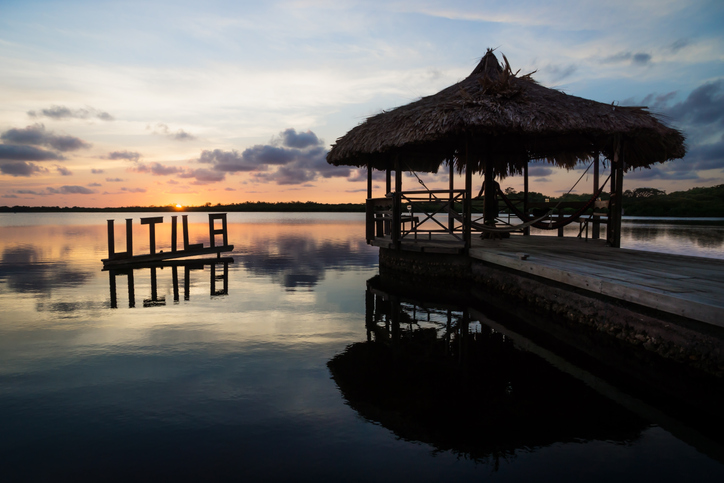
Besides the diverse fauna of the reef (with over 500 different species of fish), Útila Island is often visited by a very special guest: the whale shark, one of the world’s largest – and most peaceful – sharks. In fact, diving instructors often allow students to swim as close as 3-to-4 metres away from the shark.
Costa Rica is home to the spectacular location of Tortuguero. The uniqueness of its landscape has led to it being used as the set for scenes in several films, including El Dorado (1988), which had one of the largest budgets in Spanish cinema history.
Its endless canals and tropical forests make the Tortuguero National Park one of the country’s most precious jewels. Very few countries have managed to protect their own natural treasures to the extent that Costa Rica has.
Four of the world’s eight tortoise species come to Tortuguero to lay their eggs. This is a very special event, with tourists who take the night tour prohibited from taking photographs of them, so as not to disturb this process.
Apart from the night tour, the park also offers several other guided tours that allow tourists to gain a greater understanding of the area in an intimate and quiet manner. These excursions range from guided jungle hikes to rowboat trips and canal kayak outings.
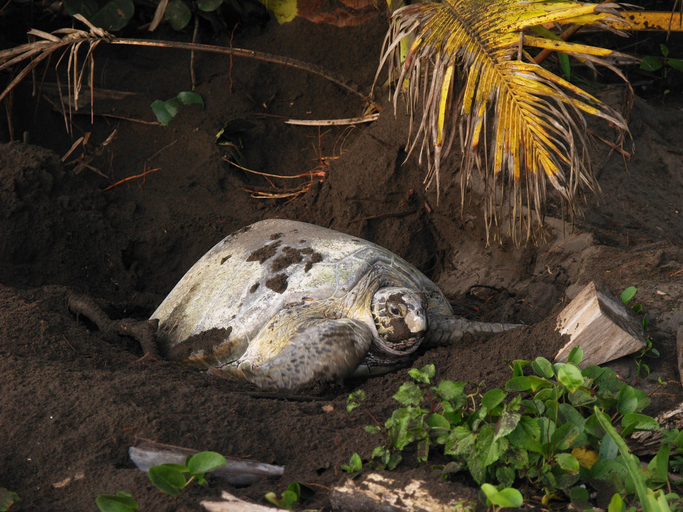
While it’s true that the tortoises are the main attraction in the area, the Tortuguero National Park also has huge biodiversity that comprises over 400 species of trees, over 2000 species of plants and around 500 different animal species, including crocodiles, butterflies, sloths and the much-feared jaguar.
The coastline of Nicaragua boasts around 70 different land formations, ranging from small islands to estuaries and coral reefs. Together, they are referred to as the Miskito Cays. Most of these small islands are surrounded by wooden huts, built above sea level by local residents.
The unique thing about Miskito Cays, besides the idyllic Caribbean landscape, lies in the fact that tourists can live among the fisherman, seeing the variety of fish and sharing their culture and gastronomy in an area with a vast range of plants and animals.
In the heart of Guatemala lies the Atitlán Lake, comprising what is possibly one of the world’s most stunning landscapes; a site in which Mayan culture is intertwined with nature.
Atitlán Lake alone is impressive enough, owing to its beautiful blue waters. However, the icing on the cake lies in the three surrounding volcanoes – Volcán San Pedro, Volcán Atitlán and Volcán Tolimán – and the twelve villages located on its shores.
What makes this destination truly special is the chance to visit each of the small lakeside villages during your stay. The best way to get from village to village is by rowboat, of which there are public and private varieties. By travelling from Panajachel, the largest village on the shores of the lake, to the smallest one, San Cruz la Laguna – which cannot be accessed by the motorway – tourists can soak up the personality of each village and their rich Mayan culture.
Tourists can do an infinite range of trips and activities. These can be very relaxed, such as a rowboat ride around the lake, or highly adventurous, such as zip-lines or the volcanic trail. The huge variety of activities means that tourists never run out of fun experiences in Atitlán!
Bocas del Toro offers everything that there is to be offered by a Caribbean destination. The combination of sun, crystal-clear waters and a friendly, festive atmosphere make Bocas del Toro a place where it is impossible to get bored!
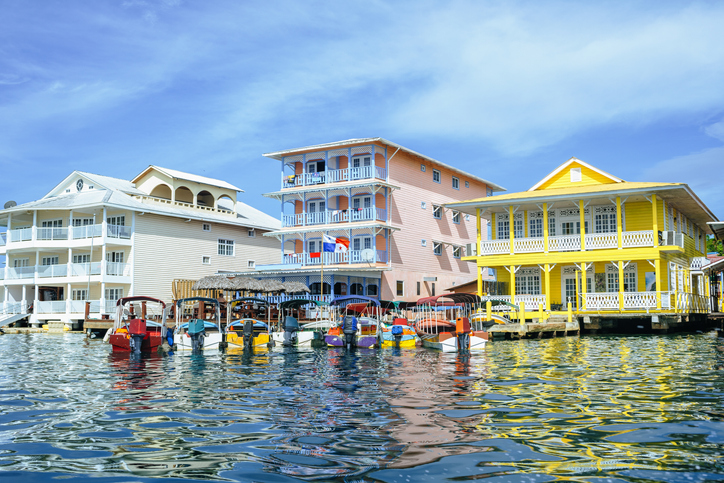
The Zapatillas Cays are a location that must feature on everyone’s ‘must-see’ list. This is a pair of two small islands in the middle of the sea, lined with white sandy beaches and coconut trees. Playa Estrella is another of the most popular destinations in Bocas del Toro, with its charm residing in the fact that you can marvel at a bed of starfish underneath your feet as you enjoy a dip in the water. A visit to Bocas del Toro is not complete without finding the famous diminutive red from, after which the beach – Red Frog Beach – was named.
While its image is recognised around the world, few people would manage to pinpoint the Big Blue Hole on the map.
The next recommended landscape is the world-famous Big Blue Hole, which is found in Belize. This is a huge dark blue circle in the middle of the sea, measuring 300 metres wide and more than 120 metres deep. This was originally a system of limestone caves, which were flooded when the sea levels rose. As they are made from limestone, the roof sank as a result of the rising waters, which subsequently formed this hole.
Tourists can enjoy this spectacle from the sky, getting a bird’s eye view of the hole as they fly over it in a helicopter. Alternatively, more sporty tourists can swim and even dive in it (if they know how to do both things, of course).
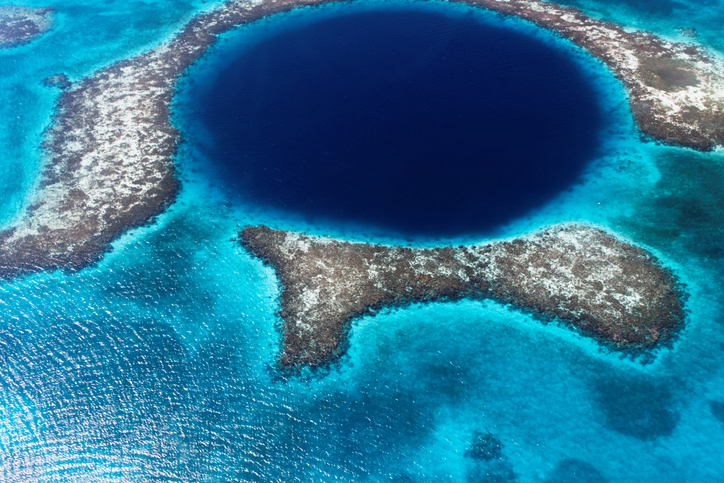
The Las Calderas Peninsula of the Dominican Republic is home to the desert of the Caribbean. These are the Bani Dunes, a unique phenomenon of the Antilles archipelago which has been a Protected Natural Area since 1996. The dunes measure up to 35 metres in height, with the dark yellow colour of the fine sands deriving from the high quartz content that is dragged into the bay by the rivers flowing into it. The Playa de las Salinas can be made out from the highest points of the dunes, completing a perfect landscape that unites sea and sand. The Playa de las Salinas was named as such because it has some of the saltiest waters in the region. In fact, tourists have the opportunity to visit this beach and learn how salt was extracted from these waters, which is well known across the island.



